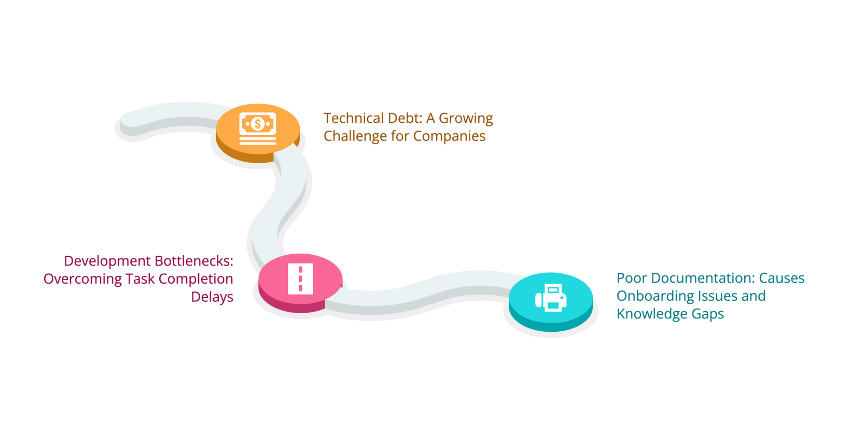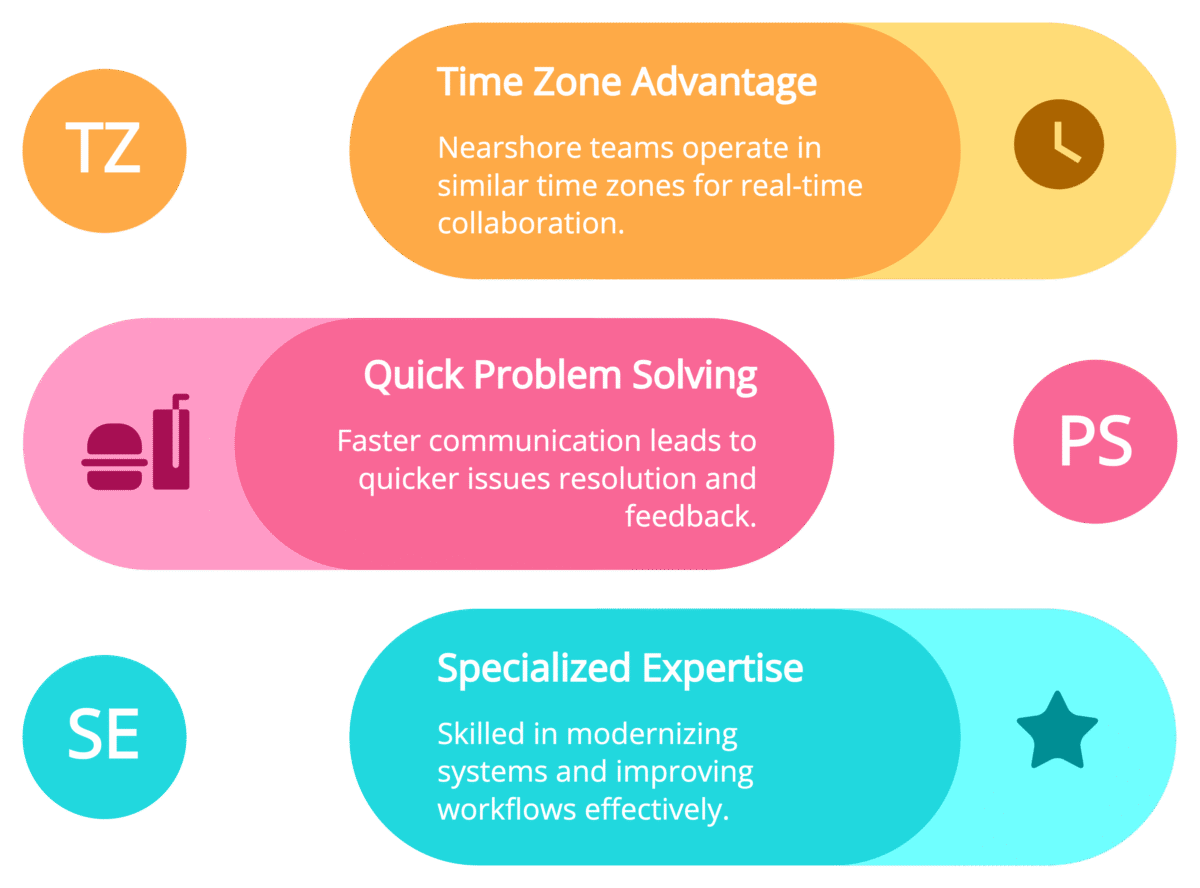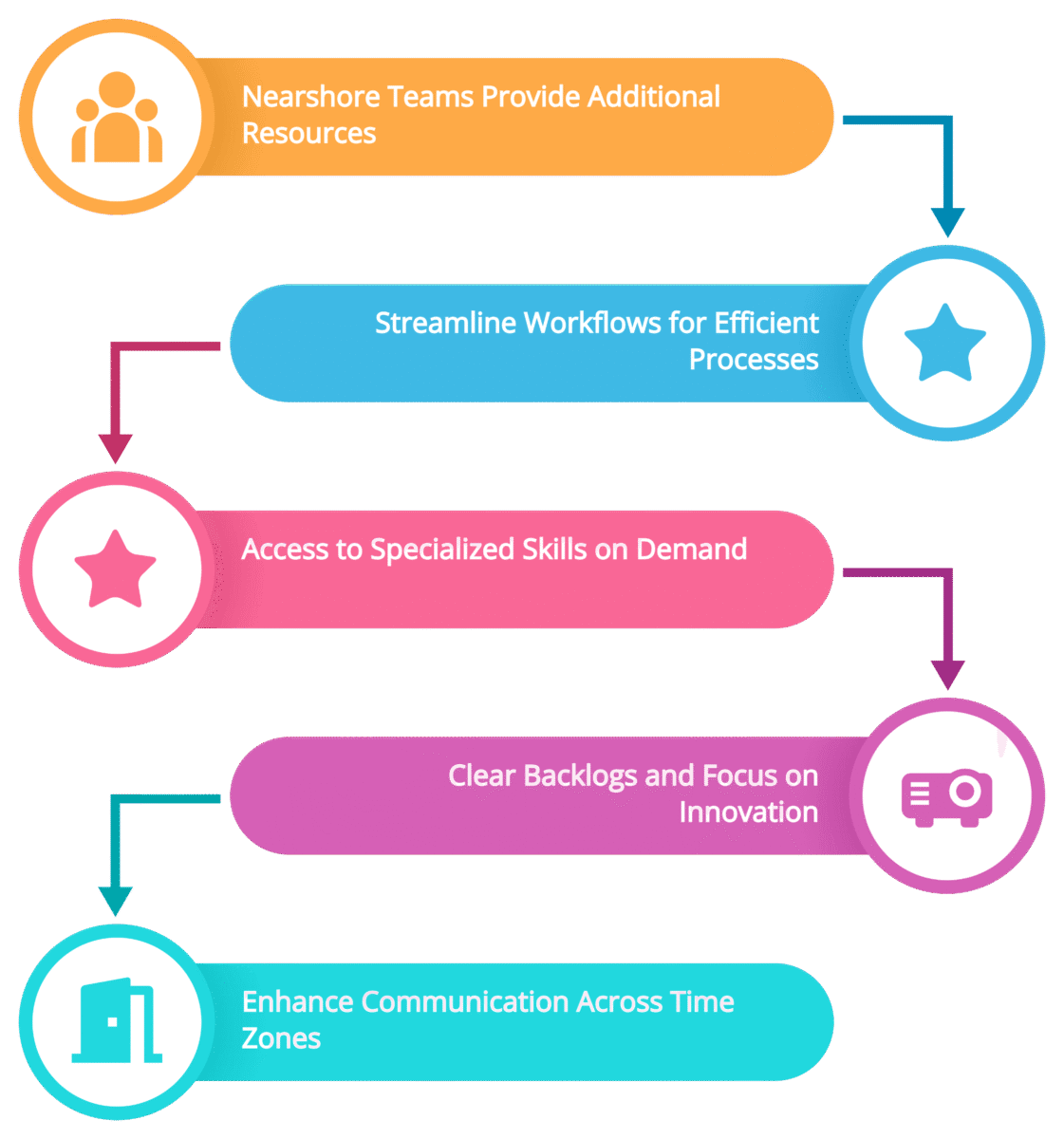
How nearshore teams fix technical debt and bottlenecks
Every growing company faces technical debt and development bottlenecks. Over time, quick fixes and short-term solutions accumulate, leading to inefficient systems and sluggish performance. Legacy code becomes a burden, making it difficult to implement new features or scale products efficiently.
Thank you for reading this post, don't forget to subscribe!Poor documentation further complicates the situation, causing onboarding delays and knowledge gaps within teams.
Development bottlenecks occur when teams lack the resources to complete tasks efficiently. Whether due to understaffing, inefficient workflows, or outdated tools, these slowdowns impact overall productivity. As technical debt grows, teams find themselves spending more time fixing old problems rather than innovating. As a result, projects miss deadlines, and software quality declines.
The Solution: Bringing in Nearshore Teams

Nearshore development teams offer a strategic way to tackle these challenges. Unlike offshore teams in distant time zones, nearshore teams operate in similar or overlapping time zones, allowing for real-time communication. This means quicker problem-solving, faster feedback loops, and greater alignment with in-house teams.
Beyond convenience, nearshore teams bring specialized expertise in modernizing legacy systems, improving documentation, and streamlining workflows. Their external perspective helps identify inefficiencies that internal teams may have overlooked. Moreover, nearshore teams can be quickly scaled up or down, providing flexibility without the long-term commitments and costs of hiring full-time employees.
How Nearshore Teams Reduce Technical Debt
Nearshore developers don’t just patch issues—they solve root problems with a structured approach. Their process often begins with a thorough audit of the codebase, identifying problematic areas that contribute to instability and inefficiencies.
Once they have a clear understanding of the technical debt, they prioritize fixes based on impact. High-risk areas, such as security vulnerabilities and performance bottlenecks, are addressed first. They refactor outdated code, improve database structures, and implement best coding practices to prevent future accumulation of debt.
Another key strategy is enforcing coding standards and best practices. By integrating automated testing, continuous integration (CI), and continuous deployment (CD) pipelines, nearshore teams help maintain code quality and prevent new debt from forming.
Additionally, documentation plays a critical role in managing technical debt. Nearshore teams ensure that systems are well-documented, making it easier for new developers to understand and contribute without causing further complications.
How Nearshore Teams Eliminate Bottlenecks

Bottlenecks slow down development, delay releases, and frustrate teams. They arise when teams struggle to meet growing demands due to resource shortages, inefficient workflows, or a lack of specialized skills. Nearshore teams help by bringing in extra hands, improving processes, and adding technical expertise exactly where it’s needed.
Clearing the Backlog: Freeing Internal Teams for Innovation
One of the biggest bottlenecks in software development is an ever-growing backlog. Internal teams often get bogged down fixing bugs, maintaining legacy code, and handling routine updates instead of focusing on strategic projects. Nearshore developers step in to take on these lower-priority but necessary tasks.
For example, a fintech company might have its core engineers working on a major product update while bugs in older versions pile up. A nearshore team can step in, address these bugs, and ensure software stability without diverting the main team’s focus. This not only clears bottlenecks but also improves overall product quality and customer satisfaction.
Agile Implementation: Making Workflows More Efficient
Many development teams face bottlenecks because of outdated or rigid workflows. Nearshore teams help by introducing agile methodologies that break large projects into smaller, manageable tasks. Agile frameworks like Scrum and Kanban ensure that work progresses in an iterative, efficient manner.
For example, a SaaS company struggling with slow feature rollouts can integrate a nearshore team into its workflow. The nearshore team can manage sprints, refine user stories, and automate testing, allowing the core team to focus on innovation rather than administrative bottlenecks.
DevOps and Automation: Accelerating Deployment Cycles
Deployment delays often create bottlenecks, particularly in organizations with slow manual processes. Nearshore teams bring expertise in DevOps, setting up automated CI/CD pipelines to speed up releases.
Consider an e-commerce platform preparing for peak holiday traffic. Without automation, updates take days to roll out, leading to downtime and lost revenue. A nearshore DevOps team can implement automated testing and continuous deployment, ensuring faster, error-free releases with minimal manual intervention.
Specialized Skills: Filling Gaps in Technical Expertise
Sometimes, bottlenecks happen because in-house teams lack the right expertise to complete a project efficiently. Nearshore teams provide specialists in emerging technologies like AI, cloud computing, and microservices, helping companies implement complex solutions without long hiring cycles.
For example, a healthcare company might want to integrate machine learning for predictive analytics but lacks in-house AI expertise. A nearshore team with AI specialists can step in, design the model, and integrate it seamlessly, reducing development time and ensuring a competitive edge.
Breaking Down Silos: Improving Cross-Team Collaboration
Bottlenecks often emerge when development, operations, and QA teams work in isolation. Nearshore teams help bridge these gaps by introducing cross-functional collaboration and knowledge-sharing practices.
For instance, a media streaming company struggling with video playback issues can use a nearshore team to enhance real-time monitoring. By working across development and operations teams, they ensure smoother deployments and fewer performance issues, ultimately improving the user experience.
Nearshore teams eliminate bottlenecks by tackling backlogs, improving workflows, automating deployments, and filling skill gaps. By integrating seamlessly into existing teams, they help businesses scale, innovate, and deliver software faster without sacrificing quality.
The Measurable Impact: Faster Releases and Fewer Issues

Companies that leverage nearshore teams experience tangible benefits. With a well-structured approach to reducing technical debt and eliminating bottlenecks, development cycles become more efficient, and software quality improves.
By refactoring legacy code, companies see reduced system crashes, improved performance, and easier scalability. With better documentation and enforced coding standards, onboarding new developers becomes faster and smoother. Automated testing and CI/CD pipelines significantly reduce the number of bugs reaching production, leading to a more stable product.
On the project management side, nearshore teams enable faster turnaround times. Teams meet deadlines more consistently, ensuring that stakeholders and customers receive updates and new features without unnecessary delays. With fewer bottlenecks, companies can respond to market changes more quickly, maintaining a competitive edge.
Technical debt and bottlenecks slow companies down and limit their ability to grow. Nearshore development teams provide a practical, cost-effective solution by modernizing legacy systems, improving workflows, and filling skill gaps. Their ability to integrate seamlessly with in-house teams, enforce best practices, and enhance efficiency makes them an invaluable asset for companies looking to scale.
For organizations struggling with missed deadlines, sluggish development cycles, or accumulated technical debt, partnering with a nearshore team is a proven way to achieve long-term success. By leveraging nearshore expertise, companies can accelerate their growth, improve software quality, and build a stronger foundation for future innovation.


